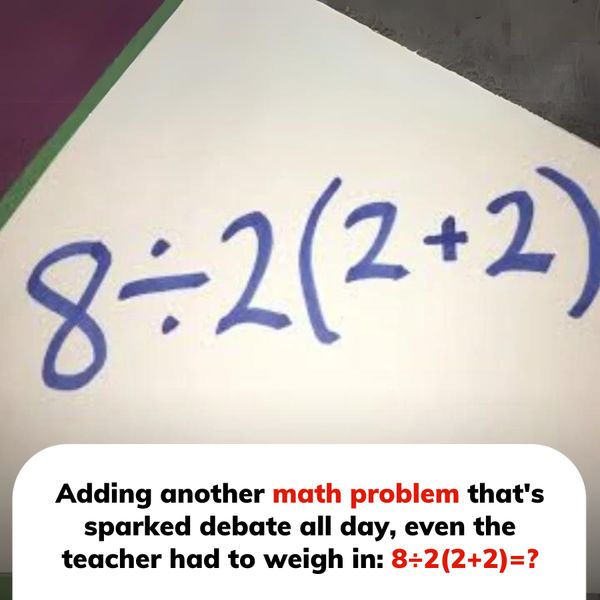For the past decade, there has been an ongoing debate among mathematicians and mathematics educators about a viral math equation. It has garnered widespread attention, being covered by publications such as Slate, Popular Mechanics, and The New York Times. The equation, which seemed to divide the internet, goes like this:

8 ÷ 2(2 + 2) = ?
If you’re like most people, you probably answered 16 and were astonished to hear that there could be a different answer. Or maybe you answered 1 and couldn’t understand how anyone could see it differently. Don’t worry, we’ll explain the definitive answer to this question and why the way the equation is written should be avoided.
As researchers who have studied the conventions of following the order of operations in math equations, we were puzzled by all the commotion surrounding this equation.
The Clear Answer
Two different answers to one math problem? That doesn’t sound right, does it? Many articles have tried to shed light on why this equation caused such a stir. Some discussed how different calculators produce different results based on the order of operations they follow. Others suggested that both answers could be correct (which is simply ridiculous).
The most common explanation focused on the use of acronyms to remember the order of operations. For example, in the United States, the acronym PEMDAS is often taught, which stands for Parentheses, Exponents, Multiplication, Division, Addition, and Subtraction. Following this order, the equation would be solved as follows:
- Start by solving what’s inside the parentheses: 2 + 2 = 4.
- Then, divide 8 by 2: 8 ÷ 2 = 4.
- Finally, multiply 4 by 4: 4 × 4 = 16.
However, in Canada, the acronym BEDMAS is commonly used, which stands for Brackets, Exponents, Division, Multiplication, Addition, and Subtraction. Following this order, the equation would be solved differently:
- Start by solving what’s inside the brackets: 2 + 2 = 4.
- Then, divide 8 by 2: 8 ÷ 2 = 4.
- Finally, multiply 4 by 4: 4 × 4 = 16.
The Importance of Not Omitting the Multiplication Symbol
From our perspective, the expression 8 ÷ 2(2 + 2) is syntactically incorrect. The controversy surrounding this equation stems from the convention of omitting the multiplication symbol.
In algebra, the multiplication symbol is often omitted when using letters as variables or constants. For example, 2x represents 2 multiplied by x. However, in arithmetic, this convention does not apply. In the equation e=mc
2, the multiplication symbol cannot be omitted.
Therefore, if the expression had been correctly written as “8 ÷ 2 × (2 + 2) = ?”, it would have made perfect sense, without causing any confusion or debate.

The Problem with Improper Attention to Multiplication
The omission of the multiplication symbol in 8 ÷ 2(4) leads to an improper prioritization of multiplication. It becomes confusing when the number 2 is placed next to the parentheses, as it creates ambiguity about how to proceed with the calculation.
We want to emphasize that writing 2(4) to represent multiplication is inappropriate. There are standard symbols for multiplication, such as “×” or “•”, that should be used instead.
So, to settle the debate once and for all, the answer to 8 ÷ 2(2 + 2) is 16. There should have never been a debate in the first place.






